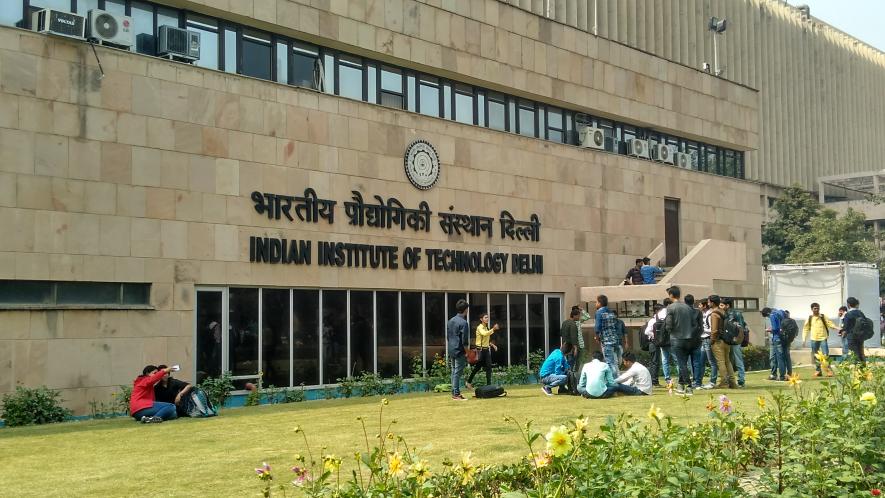Idea of Self-reliance in Science and Tech has Lost Focus

Representational image. | Image Courtesy: Wikimedia Commons
Amid the ongoing debate on achievements, weaknesses and failures over the past 74 years since Independence in relation to the vision of the Republic’s founders, two key founding ideas never get the attention they deserve. The ideas of self-reliance in science and technology (S&T) and developing the scientific temper are crucial and may well determine the future of India but have not been duly acknowledged.
The central importance of self-reliance in S&, explicitly linked to industry, was seen even before Independence as vital to the development of India, building the envisaged welfare state and delivering its benefits to the people in diverse ways. In subsequent decades, various meanings were attached to the term by different commentators depending on their own proclivities and whether they wanted to either promote or oppose the idea.
Without getting into those semantic debates, S&T self-reliance was seen as comprising the development of indigenous capability in strategic sectors, like space, nuclear energy and defence, and public sector industries in the core sectors of the economy. These goals were perceived to be crucial for maintaining the strategic autonomy of the newly independent country, free from the pressures of big powers.
Premier research institutions in S&T, higher education institutions such as the IITs, IISc and AIIMS, and the network of industrial research laboratories under the CSIR were set up in pursuit of these policies.
It cannot be anybody’s case, certainly not from the Left, that these policies delivered everything they promised or that other priorities for the development of the masses were not missed out, such as free and universal school education and an effective public health system. These promises have not been fulfilled even after 74 years of Independence.
At the same time, it is undeniable that self-reliance in S&T and the industrial foundation of the early decades after 1947 propelled the country forward to a leading position among new nations and it largely holds a similar position even today. The question is how relevant is S&T self-reliance today, where does India stand now and how does this impinge on India’s future development?
The second idea, developing the scientific temper—popularised by Jawaharlal Nehru in his book The Discovery of India—was essential for citizens to fully realise their potential in a modern India.
Explaining the term, Nehru wrote: “The scientific temper points out the way along which man should travel … [What is needed] is the scientific approach, the adventurous and yet critical temper of science, the search for truth and new knowledge, the refusal to accept anything without testing and trial, the capacity to change previous conclusions in the face of new evidence …”
Article 51A (h) of the Directive Principles of State Policy states that it is the duty of every citizen to “develop the scientific temper, humanism and the spirit of inquiry and reform”.
This article deals only with self-reliance in S&T due to the limitation of space. Developing the scientific temper will be dealt with in a subsequent article.
Self-reliance in S&T more relevant than ever
Over the first three post-Independence decades, the pursuit of self-reliance in S&T resulted in an impressive industrial base in major sectors led by the public sector, a good—even if narrow—base in basic, applied and industrial research and higher education in science and technology.
Perceptions have been deliberately fanned over the years by vested interests that public sector dominance was ideologically pushed to promote a ‘socialist’ path and suppress the private sector. However, the captains of the private sector had agreed in their famous Bombay Plan of 1944 that the government should set up and run core sector industries since they had neither the capital nor the capability. The private sector agreed to concentrate on consumer goods and light engineering.
By the 1970s, public sector heavy industries, while making a significant contribution to the economy and the exchequer, were also technologically stagnating in many areas, which impeded their competitiveness and potential for contribution in the future.
Some may blame the PSUs for this weakness. However, it must also be understood that the PSUs continue to have little autonomy to chart their own path for modernisation, upgradation and R&D investment.
On their part, private sector industries such as automobiles, two-wheelers, consumer durables, etc. never even attempted to go beyond their original collaborations with foreign partners, stayed with old and outdated models for decades being comfortable in a fully protected sellers’ market and felt no need to acquire autonomous capabilities on their own. The private sector entities felt no need for self-reliance, neither for themselves nor for the nation, and R&D remained a far cry.
Changing directions, false narratives
By the 1980s and ‘90s, the initial direction and impetus of the public sector-led self-reliant development had lost steam. Dominant forces in the polity started courting foreign investment, divestment of PSUs, and gradually withdrew from many sectors under the influence of the globally dominant neo-liberalism, championed by the IMF, the World Bank and other international agencies.
These trends climaxed with a full-fledged embrace of neoliberal policies in the 1990s with the stated aim of unleashing the “animal instincts” of the private sector and foreign corporations, who were provided numerous incentives such as deregulation and opening up of almost all sectors of the economy.
However, in the real economy, a different story unfolded. A boom in consumer durables got underway, boosted by wage increase of public and private sector employees and generous loans by banks. Foreign companies entered the Indian market in a big way while domestic companies rushed into collaborations with them to enhance the range and quality of their products. Yet few gains were made in self-reliance and enhancing the autonomous capability of industries, especially in the private sector.
Foreign brands made it big in India and several domestic companies made a lot of money, but few indigenous brands or products made a mark in international markets.
This trend has worsened since the present dispensation came to power in 2014. Grandiose promises like turning India into a developed country and becoming a $5 trillion economy in the next few years have been made. The government also launched the ‘Atmanirbhar Bharat’ (self-reliant India) campaign with much fanfare while inviting foreign defence majors into the country.
However, countries that have gained significant international economic standing have made it based on their indigenous efforts to build autonomous scientific and technological capabilities. Japan, followed by South Korea in the 1970s and ’80s, then some other South-East Asian countries and later China have all realised and demonstrated the value of self-reliance and development of autonomous S&T capabilities. These efforts not merely helped these economies but were also the stepping stone for them to play a larger role in the global economy.
These self-reliant countries have a prominent place in technology, innovation, manufacturing and value-chain in consumer durables, electronics, microprocessor chips, computing systems, cellular phones and communication backbone, robotics, capital goods and many other sectors. China especially stands at the threshold of achieving a major foothold in technologies of the future, like 5G, artificial intelligence, internet-of-things, automation, autonomous vehicles, battery storage systems, etc.
India is undoubtedly a good market for foreign goods—even if they are sometimes made locally or wholly imported or assembled—such as automobiles and cell phones. Even the largest private corporations, except a very few, are junior partners of MNCs or other foreign entities and haven’t developed autonomous S&T capabilities or make few products of global standard.
Even though the private sector is not interested in R&D or in developing significant indigenous capability, the government is hell-bent on privatisation, and divesting from the public sector, the only industrial force that could have undertaken R&D and technology development.
India’s future looks grim unless it again embraces self-reliance in S&T, strengthens its PSUs and increases public investment in research and education in general.
The writer is with the Delhi Science Forum and the All India People’s Science Network. The views are personal.
Get the latest reports & analysis with people's perspective on Protests, movements & deep analytical videos, discussions of the current affairs in your Telegram app. Subscribe to NewsClick's Telegram channel & get Real-Time updates on stories, as they get published on our website.
























